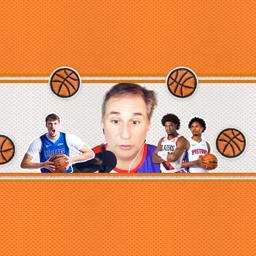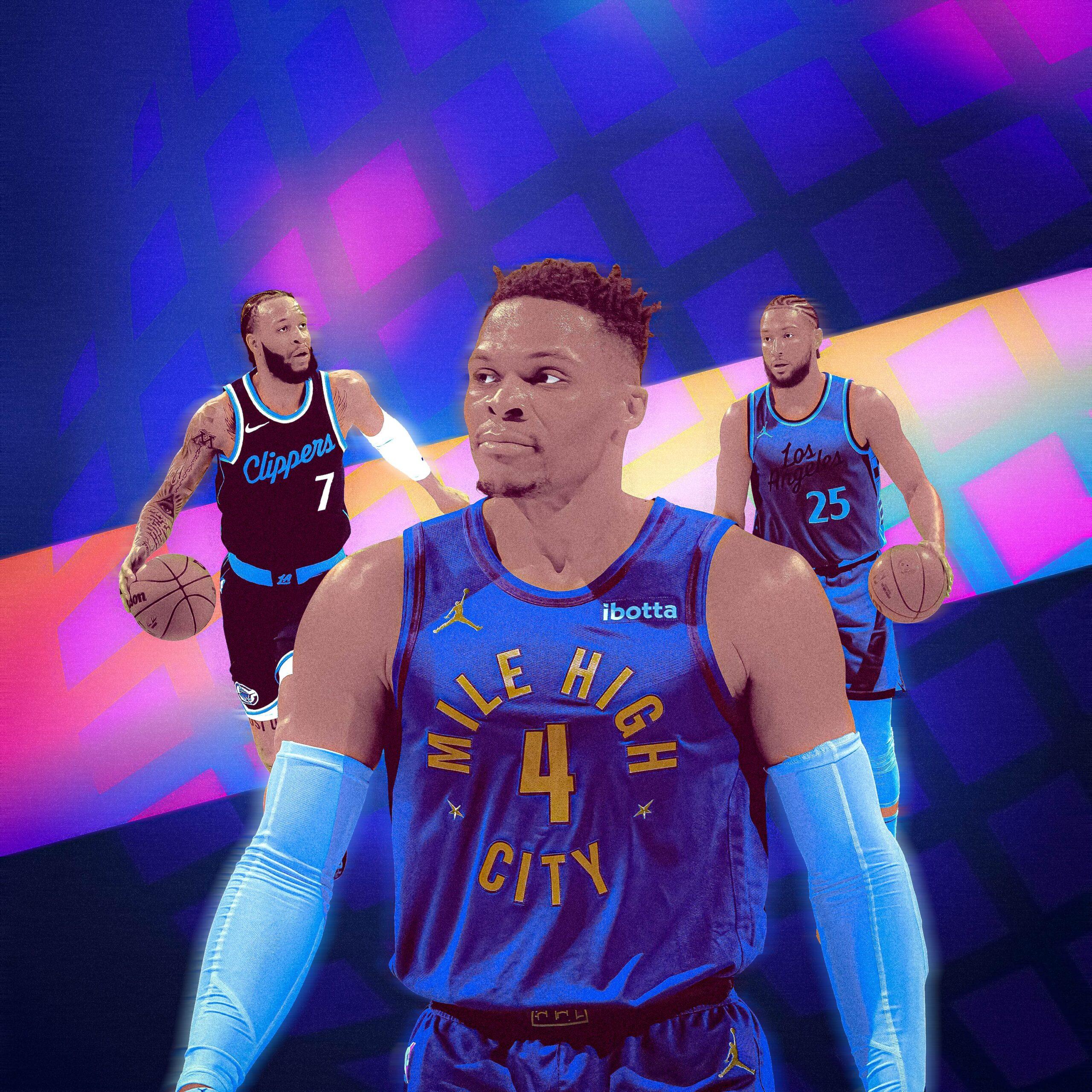
NBA offseason business is close to over, but in addition to the Big Four restricted free agents who’ve yet to strike a deal, there are still a few notable unrestricted players who can have some kind of impact if they land in the right role. Here’s a look at five who still don’t have a team, with a few thoughts about where they may make the most sense.
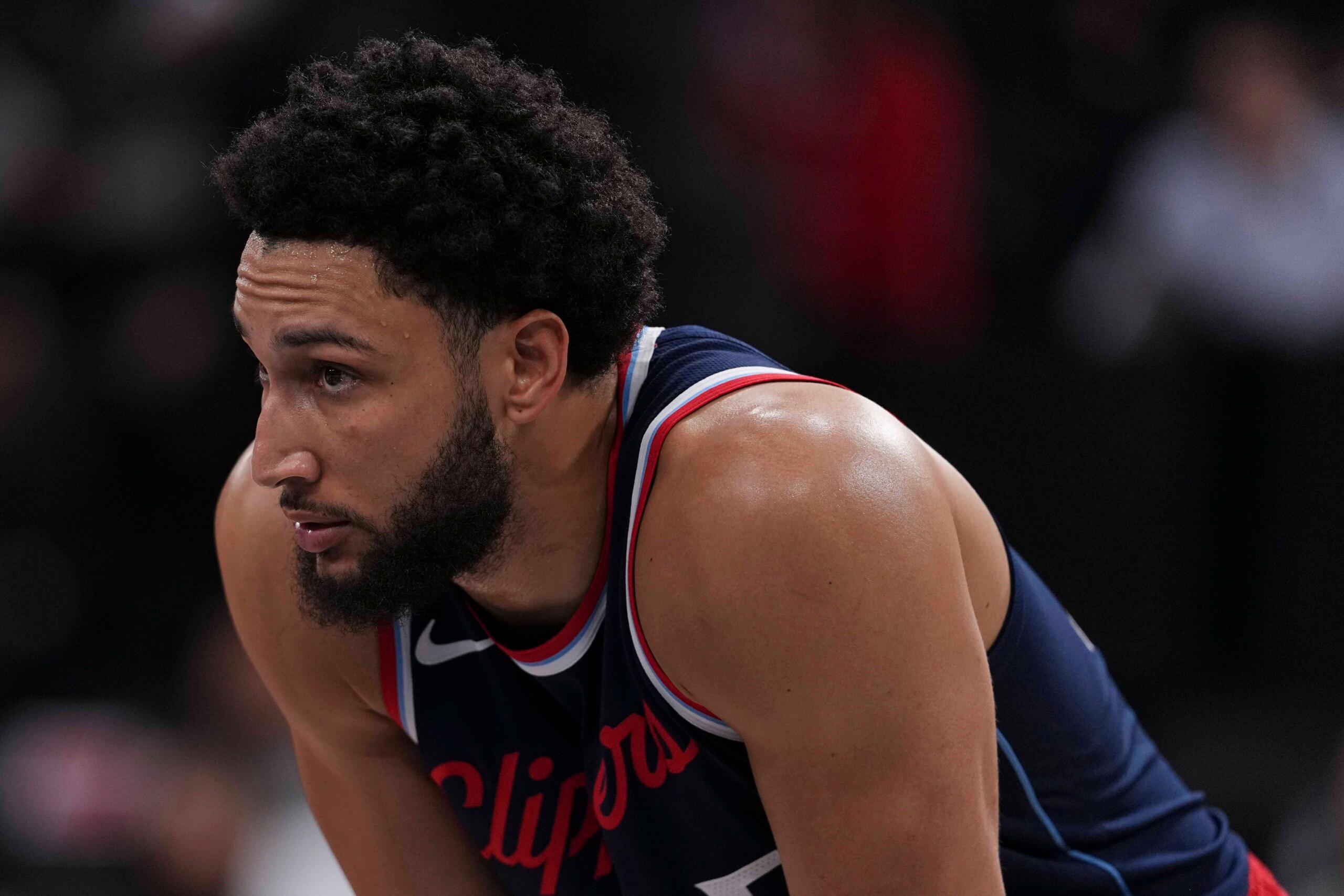
Ben Simmons during a game against the Pelicans in April
Ben Simmons
There’s a very good chance that we’ve seen the last of Simmons in the NBA. Just about every physical skill he once boasted has diminished, to the point that any tantalization is gone from his play. Would it surprise anyone if he packed up his belongings and moved back to Australia tomorrow? Who could blame him for wanting to move past the NBA and get on with his life?
I think there’s a perfect NBA team for him, though. One last chance for him to do something on a regular basis in a semi-relevant situation. Why not become the starting point guard for the Indiana Pacers? Throw Simmons the keys, ask him to impersonate Tyrese Haliburton, and just see what happens? This roster was built to accommodate and emphasize a pass-first point guard who races up and down the court. Why not take a flier? It’s a no-lose situation for Indy. Yes, nobody will guard Simmons when he doesn’t have the ball, which is one of several key differences between him and the All-Star he’d be replacing. But if Simmons stinks, no harm, no foul! He’d be on a veteran’s minimum contract for a team with zero expectations until Haliburton’s Achilles recovers.
Simmons just turned 29 years old and spent the best years of his career in Philly with T.J. McConnell as his backup point guard and Lloyd Pierce as one of his assistant coaches; in Indiana, he could reunite with both. But make no mistake—this wouldn’t be the rejuvenation of an unsalvageable career or any deus ex machina. It’s more about plugging in a cheap, semi-sensible one-year replacement on a team that could use a pass-first point guard. Indiana already has 15 players under contract, but there are ways to open up a spot if it really wanted to. Again, what’s the downside?
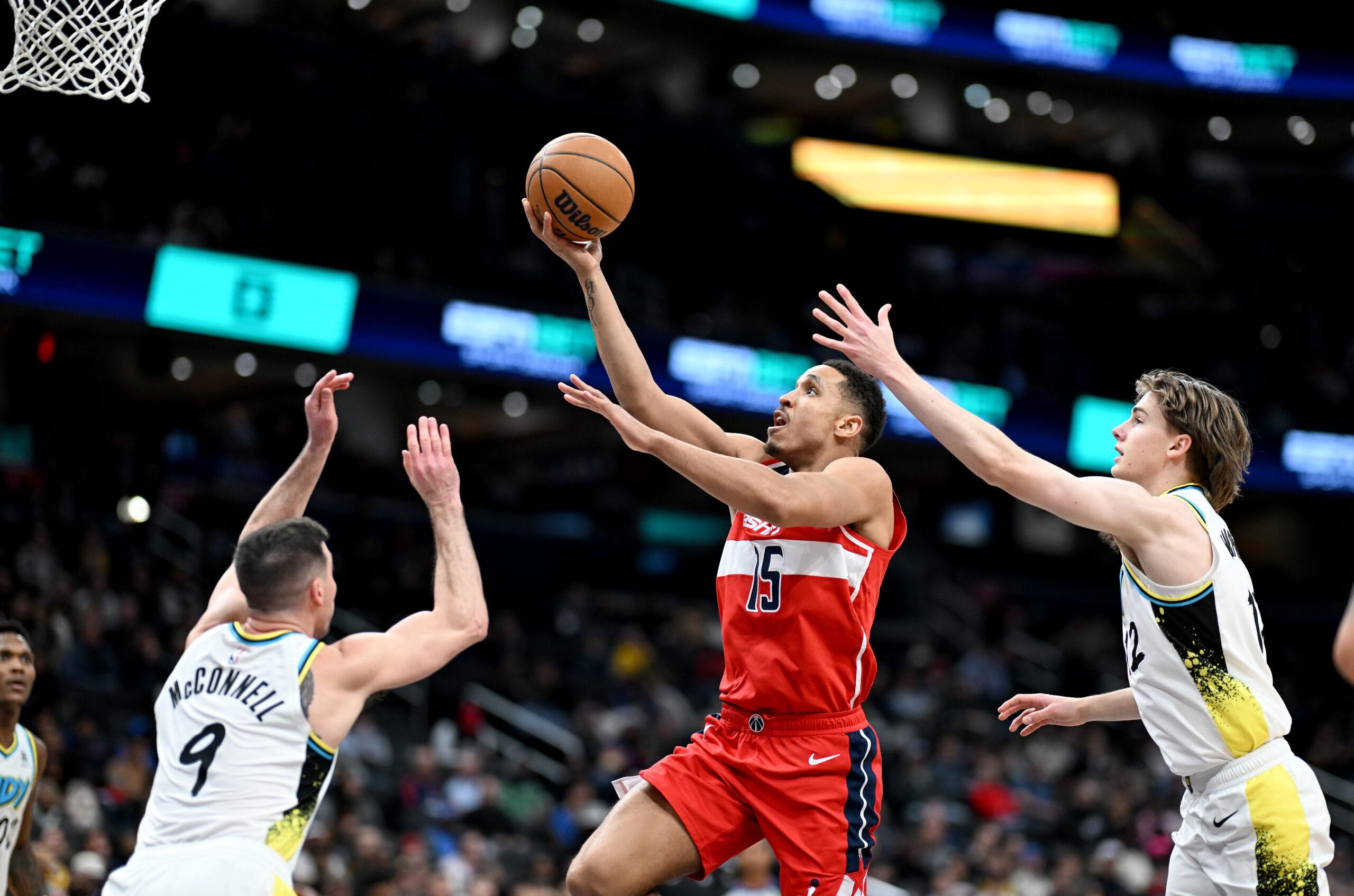
Malcolm Brogdon drives to the basket in a game against the Pacers in February
Malcolm Brogdon
Since Brogdon was voted the NBA’s Sixth Man of the Year with the Boston Celtics back in 2023, he’s played a combined 63 games for two very bad teams (the Portland Trail Blazers and Washington Wizards) that weren’t trying to win. Some of this backslide into irrelevance is a little surprising. How could someone who so clearly impacted winning a couple of seasons ago have one foot out of the league at an age when he should still have something to offer?
The answer is a slew of health issues that have plagued the 32-year-old pretty much since he was drafted. Two years ago, the Los Angeles Clippers backed out of a trade with the Celtics after not liking what they saw. Last season, he played in only 24 games thanks to thumb, hamstring, foot, and ankle injuries. But if he had a deal at the veteran’s minimum (an amount he might be holding out to avoid), there’s more reward than risk for any competitive team willing to bring him in.
The Minnesota Timberwolves should be interested since they need some kind of insurance for the Mike Conley–Rob Dillingham tandem that may be a little too old or inexperienced for a legitimate championship run. They can give Brogdon the taxpayer midlevel exception and still be under the second apron. And then there’s his hometown Atlanta Hawks, a pseudo-contender that has one roster spot and would avoid the luxury tax even if they offered him the rest of their midlevel exception. Don’t rule out the New York Knicks, either, even though they’ve already signed Jordan Clarkson.
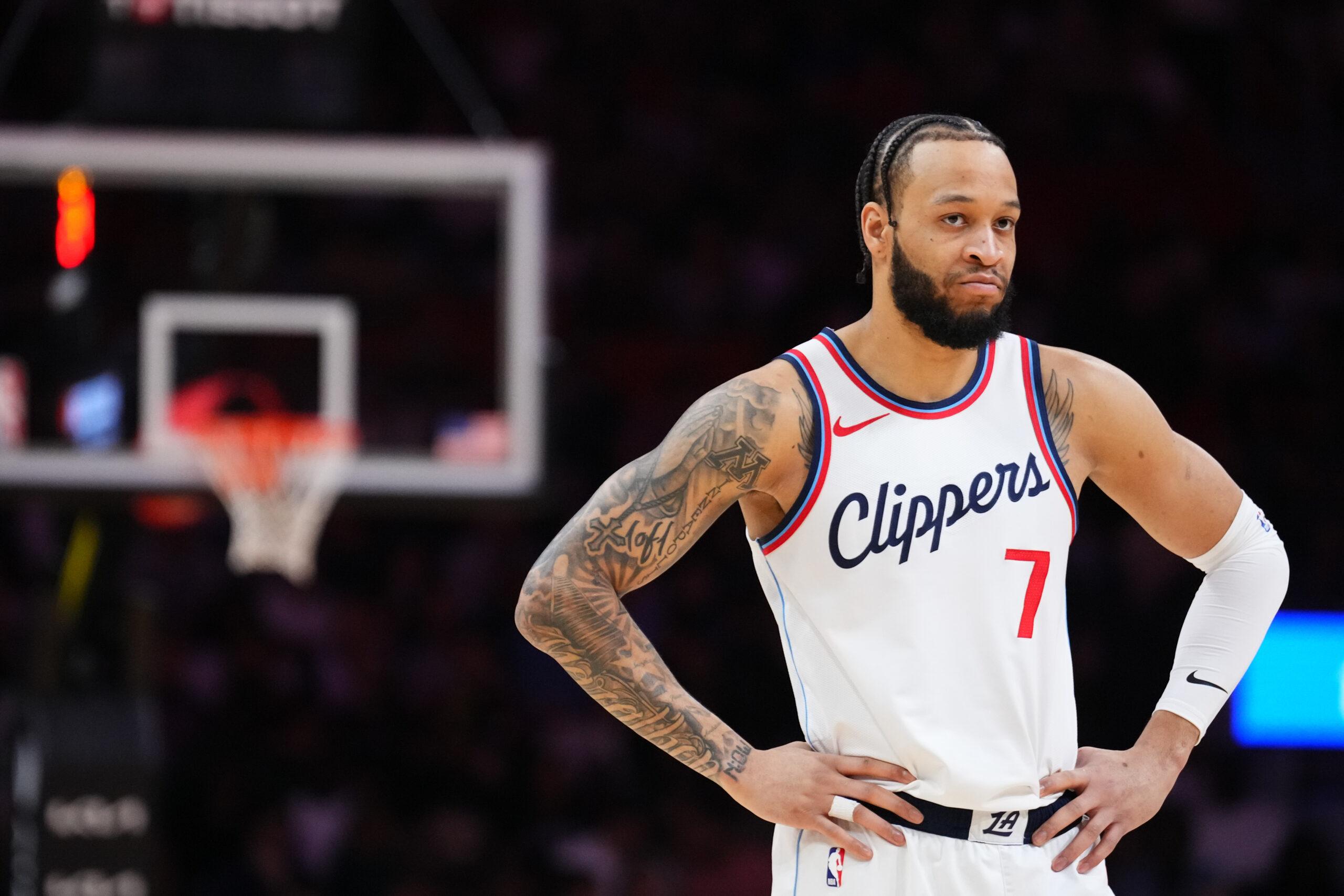
Amir Coffey during a game against the Miami Heat in March
Amir Coffey
Despite all the ways his game is a bit forgettable, I’ve always appreciated Coffey and never really understood why, over the years, he flickered in and out of Ty Lue’s rotation. He’s pretty good! Last season, he averaged a career-high 24.3 minutes per game (the exact same number as Derrick Jones Jr.) and made 40.9 percent of his 3s (which was a slight tick up from 38.0 percent in 2023-24).
Coffey is 28 years old and 6-foot-7 and can’t be left alone behind the arc. He’s consistent, understands his limitations, and was the longest-tenured Clipper other than Kawhi Leonard and Ivica Zubac before the club decided to go in a different direction. (L.A. still has an empty roster spot, but signing Coffey would put it in the first apron and dramatically increase its luxury tax bill.) Bottom line: This is a dependable NBA rotation player. Why don’t the Golden State Warriors sign him? Or the New York Knicks? Or the Miami Heat? There’s something virtuous in every role player who accepts self-denial as a survival mechanism. That’s Coffey, a professional conformist with skills that accentuate those of his more talented teammates. A good team should sign him.
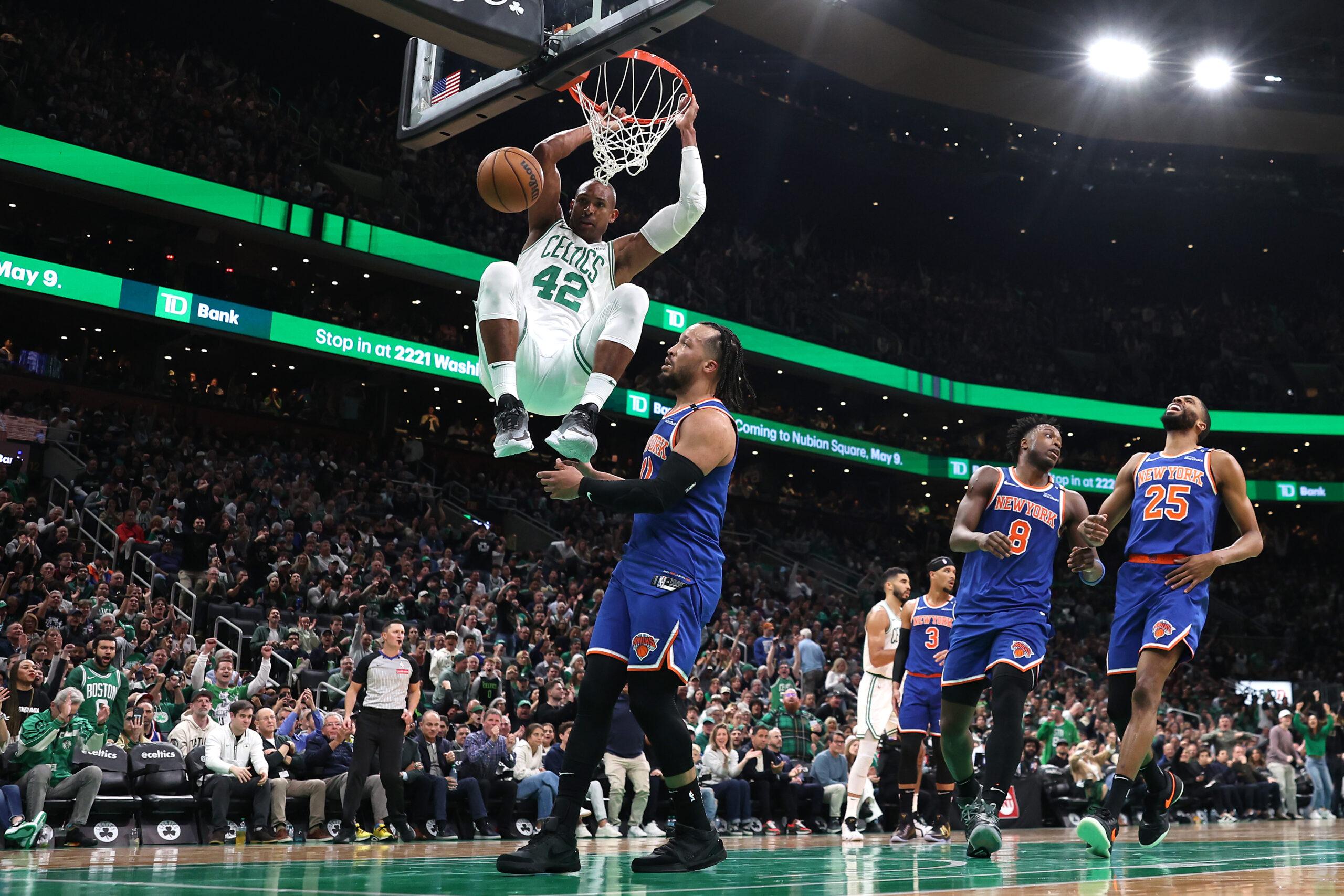
Al Horford dunks the ball against Jalen Brunson in the 2025 NBA playoffs
Al Horford
By far the best player available, Horford is an ageless wonder who enhances any setting he’s plopped into. Even at 39, he’s still a versatile, 3-point-shooting big who can switch onto the perimeter, protect the rim, rebound, pass, and provide unquantifiable championship-level leadership through the muck of a playoff run.
He’s reportedly been tied to the Golden State Warriors for weeks, which makes plenty of sense. Horford is the rare big who could stretch out lineups that feature both Draymond Green and Jimmy Butler without being a liability on the other end. The holdup is likely tied to the fact that even though the Warriors could offer their full midlevel exception ($14.1 million), doing so would hard-cap them at the first apron, which they’re currently about $25 million below. Meanwhile, Golden State also needs to maintain as much flexibility as possible to sort out Jonathan Kuminga’s restricted free agency and its six empty roster spots.
There’s a scenario in which the Warriors sign Kuminga to a tradable short-term contract (similar to the one Jalen Green agreed to with the Houston Rockets) that puts them into the tax and then use their taxpayer midlevel exception to add Horford on a two-year, $11.6 million deal—an order of operations that would allow Golden State’s payroll to climb above the first apron.
But if the money drops that low, could other teams swoop in with better offers for Horford? It’s hard to know what his priorities are considering he just won a championship, which opens the door for someone like, I don’t know, the Charlotte Hornets to give him the full midlevel exception. Charles Lee coached Horford during Boston’s championship season, and Hornets general manager Jeff Peterson worked for the Atlanta Hawks when Horford was their best player.
It sounds illogical, and Charlotte would need to make a few moves to free up a roster spot, but if Horford would be happy closing out his Hall of Fame career getting overpaid to babysit a young team that could really use one of the league’s most professional figures in its locker room, all the best to him.
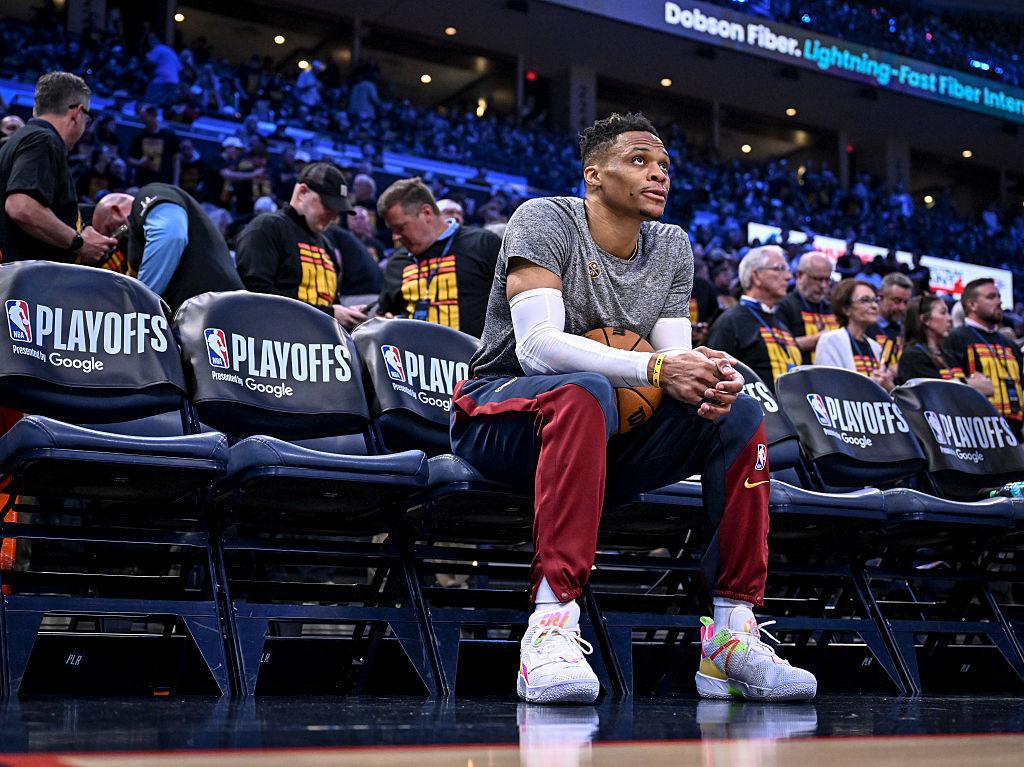
Russell Westbrook on the bench before a playoff game against the Oklahoma City Thunder
Russell Westbrook
There are more than 118,000 minutes of basketball played in your average NBA regular season, making it impossible to label any one sequence as the most important. But when I think about all the possessions I watched last season, maybe the most damaging happened at the very end of an overtime thriller between the Denver Nuggets and Minnesota Timberwolves.
With nine seconds left and Denver up by a point, Westbrook proceeded to desecrate a masterpiece from the world’s greatest player—Nikola Jokic finished with a 61-point triple-double—by missing a layup on one end and then, as time expired, hustling back to foul Nickeil Alexander-Walker in the opposite corner as he launched a 3. NAW sank two free throws and Minnesota won the game. It was devastating. I remember thinking that the Nuggets could no longer tolerate the impulsive chaos that Westbrook thrived on and suffered through. The following night, he took a season-high 25 shots in a loss against the San Antonio Spurs. Less than a week later, Michael Malone and Calvin Booth were fired.
Denver’s decision to sign Westbrook last summer felt like a Hail Mary. The now-36-year-old was coming off a disastrous postseason with the Los Angeles Clippers, missing open shots and forcing contested ones, committing unforced turnovers, and reenacting Wile E. Coyote’s hopeless pursuit of the Road Runner every time he touched the ball.
The Nuggets saw all that and still decided to bring him aboard. It was a rocky ride that had its fair share of highs (his two-man game with Jokic sparkled, and his energy on the glass was infectious) before ending with a predictable thud in the playoffs against the Oklahoma City Thunder defense, which dared him to shoot and baited him to dribble. Westbrook finished the series with 17 assists, 18 turnovers, four steals, and 26 personal fouls. The Nuggets were outscored by 92 points when he played, largely thanks to his putrid 40.2 effective field goal percentage.
So where to next? Or, to put it more succinctly, what type of situation is even close to practical for such a deeply flawed future Hall of Famer? Westbrook is quite clearly a poor fit for a playoff team in just about every context, and he’d have no purpose on a tanking loser that would rather develop someone 15 years younger. That leaves teams somewhere in the middle. Maybe the Milwaukee Bucks, a club stumbling through its 11th hour and in real need of another ball handler not named Kevin Porter Jr.? Westbrook clearly wouldn’t accentuate Giannis Antetokounmpo in the half court, but Milwaukee could use someone who puts pressure on the rim when he’s out of the game.
Or how about the less desperate Warriors? Golden State is currently in a Kuminga-sized holding pattern and has several empty roster spots and real last hurrah vibes. Could the Warriors talk themselves into Westbrook as a regular-season innings eater who could push the pace and let Steph Curry rest a little more than he otherwise would? Westbrook might create obvious and untenable spacing issues, especially in lineups that would already have non-shooters like Butler and Green. That dynamic could potentially be so radioactive that the Warriors probably wouldn't seriously consider bringing Westbrook in at all. (The broad obliviousness seeping out of Sacramento—the team he’s most recently been linked with—and New Orleans makes it hard to rule out either team, which is sad as hell.)
Westbrook is one of the 75 greatest basketball players who ever lived. He won an MVP award, has two scoring titles, led the league in assists three times, made nine All-Star teams, and single-handedly normalized the triple-double. But all that glamorous cigar smoke is now a cold pile of ash. Westbrook is searching for his seventh team in seven years. The most probable scenario here is that he’ll go home, stay in shape, and wait for some team’s backup point guard to get injured. It’d be a sobering, sputtering end to one of the more electrifying individual careers in NBA history. But if he can’t make it work with Jokic, it’s hard to envision another team talking itself into giving him another chance.
Honorable mentions: Chris Boucher, Thomas Bryant, De’Anthony Melton, Trey Lyles, Gary Payton II, and Seth Curry


